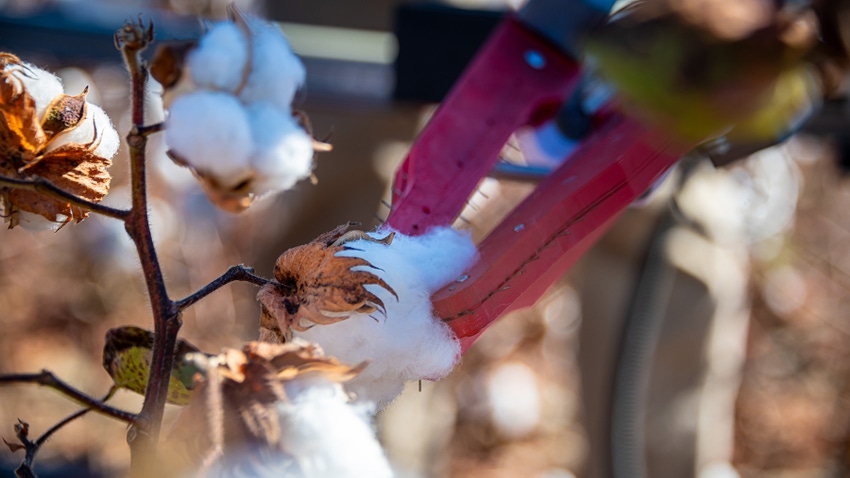
Hear ye’! Hear ye’! Or, perhaps: Hail! Let it be known the venerable institution known affectionately as Starkvegas seeks a new nickname: the Silicon Valley of Ag Autonomy.
Mississippi State University this year raised its flag over the autonomous landscape by creating the Agricultural Autonomy Institute. Leaders believe it’s the first of its kind globally.
“I really think that we’re first,” said Alex Thomasson, director of the Ag Autonomy Institute and head of the Department of Agricultural and Biological Engineering. “We’re going to have a lot of competition but it’s going to be awhile before there’s another institute.”
The institute was officially established in June by a vote of the Mississippi Institutes of Higher Learning, and the university celebrated its grand opening in late October. Prior to the official designation, the Robert M. Hearin Foundation provided seed funding to operate the institute for three years.
“Our chief goal is to make Mississippi the Silicon Valley for ag autonomy,” Thomasson said.
Though they lead the pack aiming for such a goal, Thomasson said the work of the institute at MSU is already underway: robots to pick cotton, drones to scout insects and disease, self-driving tractors, and machines for gathering crop data are in development across the campus. Given that the National Science Foundation ranks Mississippi State in the nation’s top 5% of universities for agriculture and natural resources, many believe the institute is a natural evolution. Autonomous capabilities also can help resolve agriculture’s labor supply challenges and lift economic opportunities for the state, said Thomasson and the Ag Autonomy Institute’s Assistant Director Madison Dixon.
Primary goals
Dixon outlined three primary focus areas for the institute:
Develop and train ag autonomy workers. They’re working to create a labor force for agricultural operations, particularly farmers. “We’re creating autonomous opportunities because labor is not there,” Thomasson said.
Attract manufacturers in this developing field to set up operations in Mississippi. Thomasson noted that that global agricultural autonomy market is expected to go from its $5 billion position in 2021 to $12 billion in 2026.
Create opportunities for autonomous research.
As the projects roll out, Thomasson sees some intellectual property being licensed to private companies. Other projects may lead to public-private partnerships. Intensifying the income opportunity for the university and those involved in the research, Thomasson said, “is all about incentivizing researchers and other faculty on campus to create intellectual property.”
Becoming the “Silicon Valley of Ag Autonomy” isn’t a goal hotwired to social status and isn’t specific to the Starkville campus, Dixon said. It’s a goal designed to create opportunity across the state.
“Mississippi suffers greatly from a brain drain. Residents find jobs out of state. Students graduate and move away,” Dixon said. “We want to train people, promote economic development, and promote workforce development. We want to train people and give them jobs to go to here in Mississippi.”
Given that vision, Thomason said, success for the institute’s leaders doesn’t necessarily look like moving from a few offices in an existing building to a its own new brick-and-mortar altar to the age of autonomy. What it looks like is solving labor issues for farmers and related industry and improving opportunities for Mississippi residents.
“Success is achieving our vision around economic development in Mississippi,” Thomasson said.
About the Author(s)
You May Also Like






